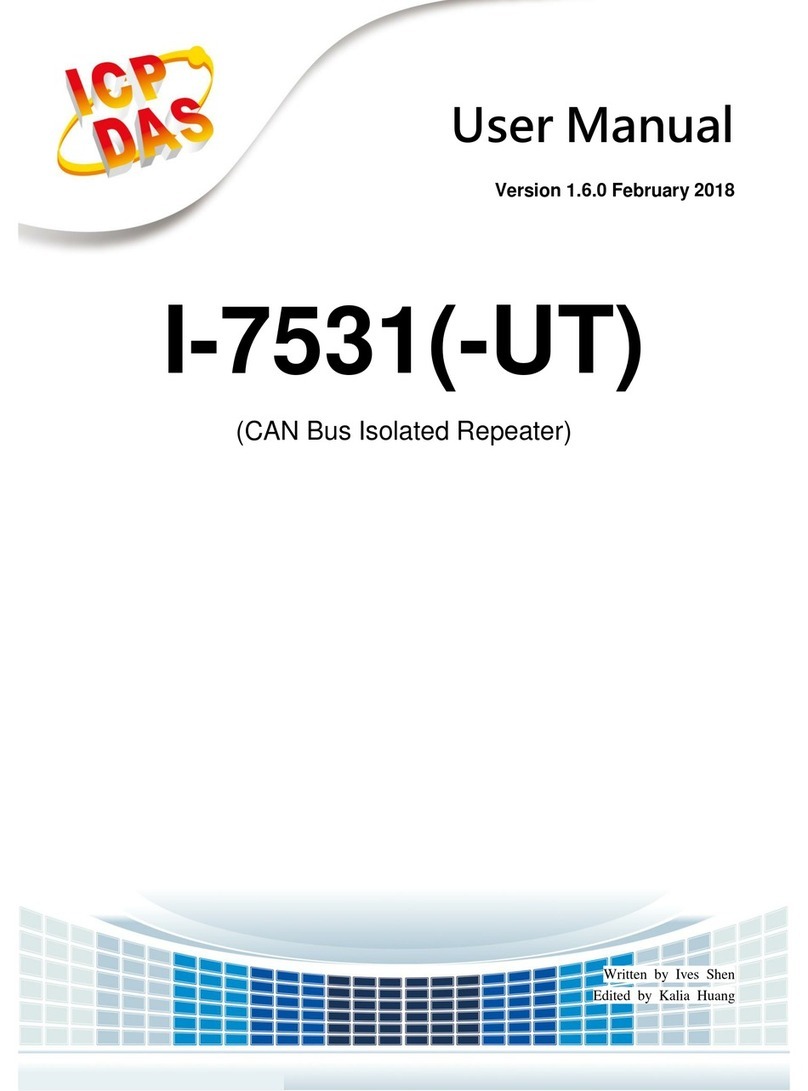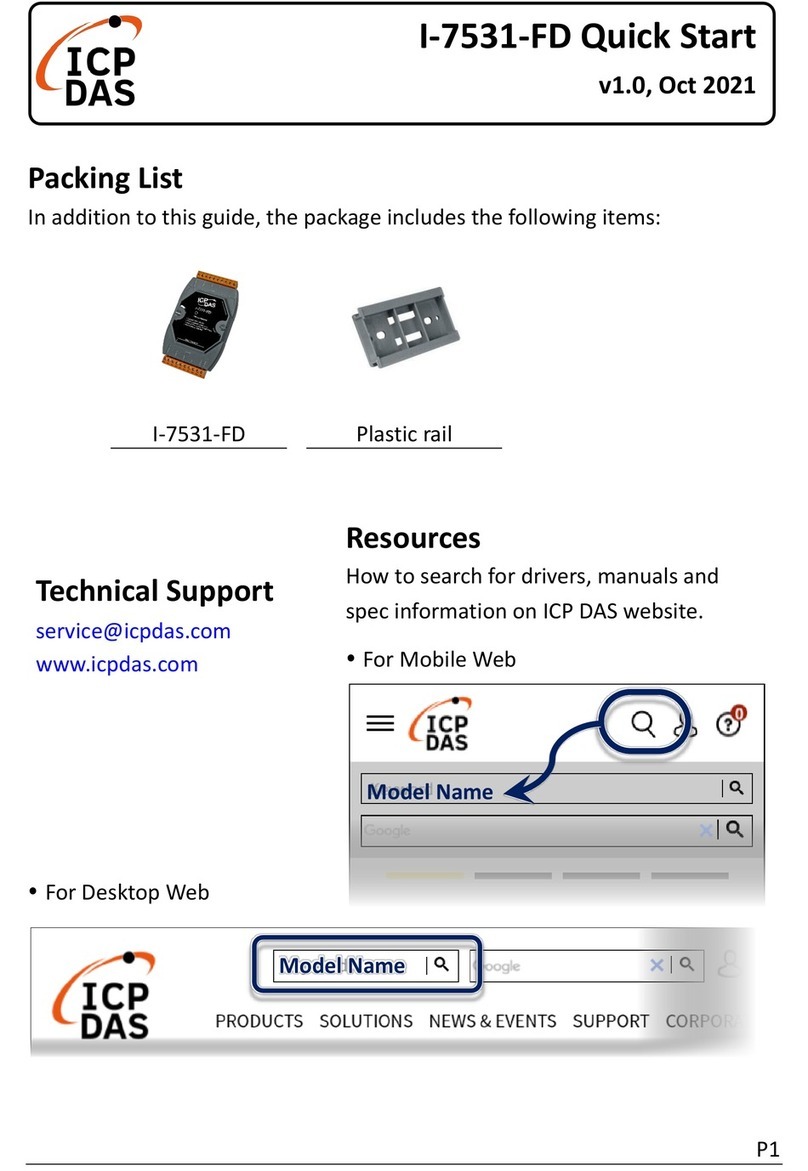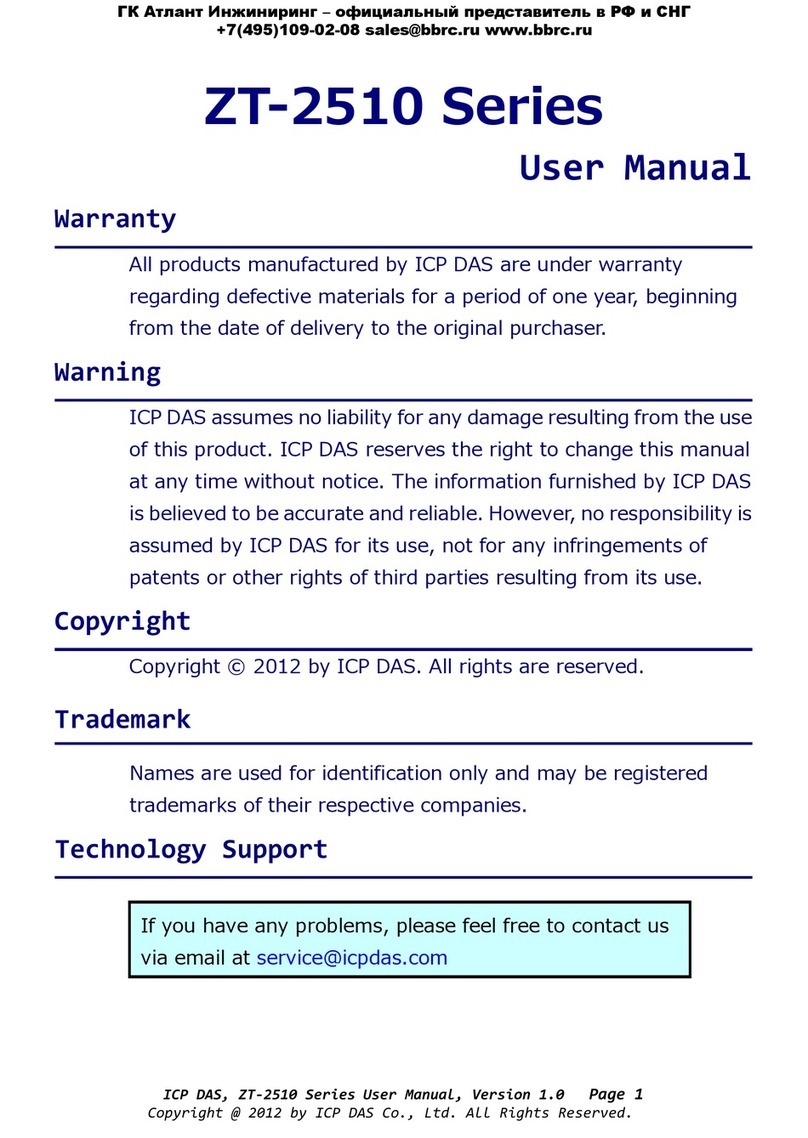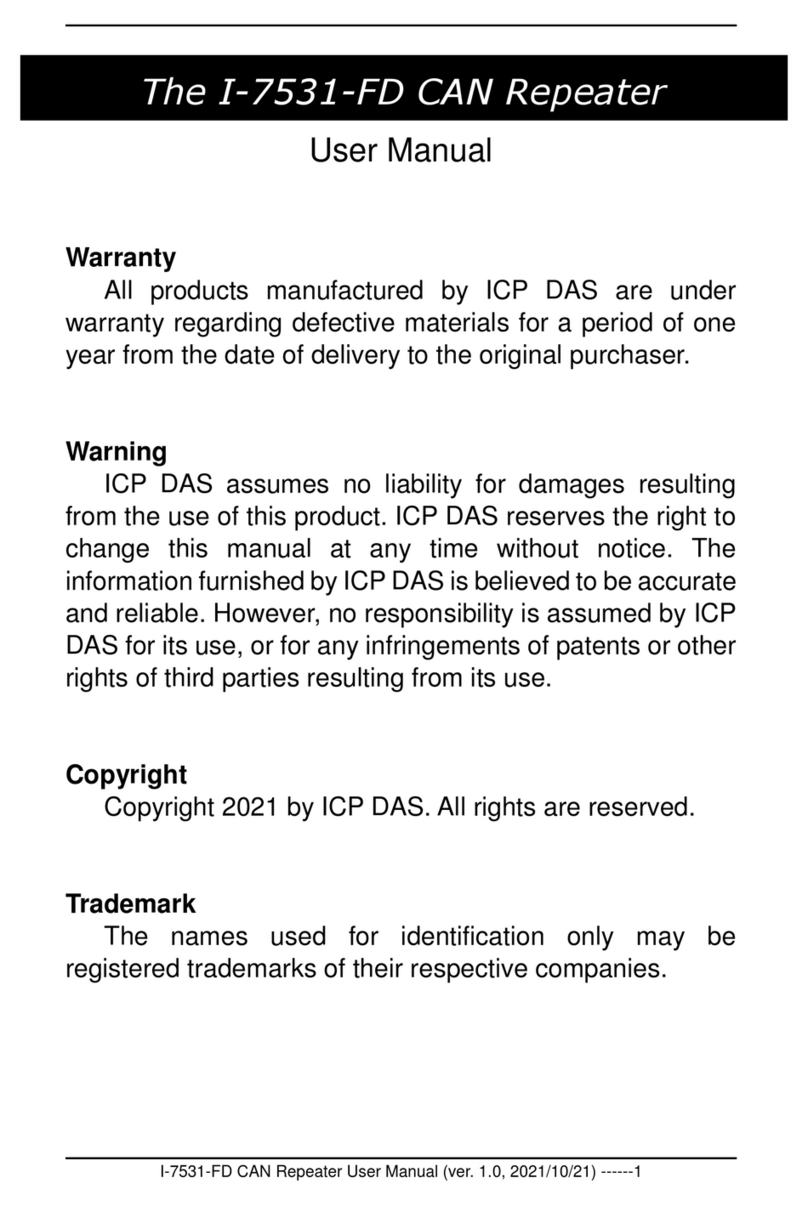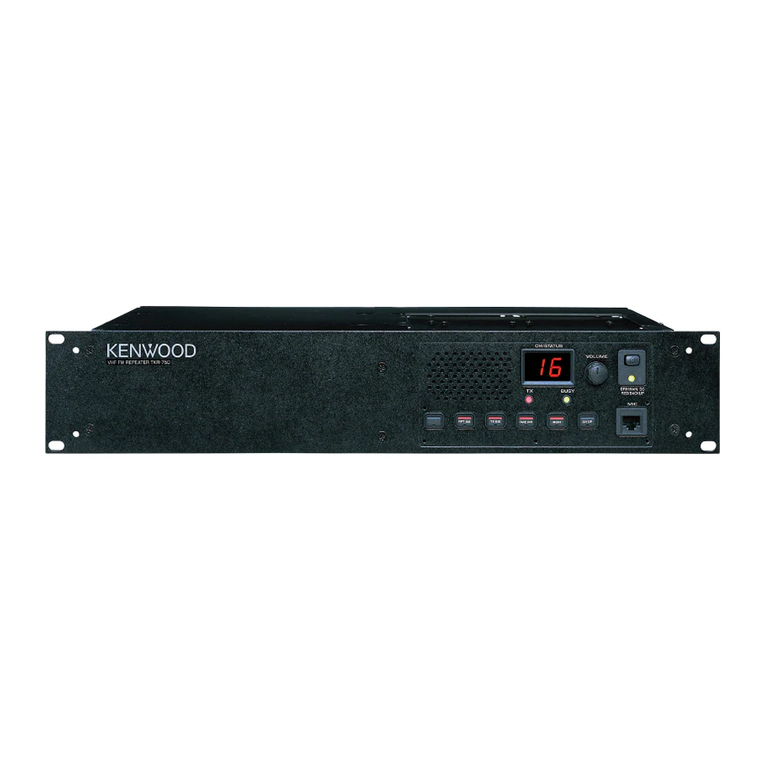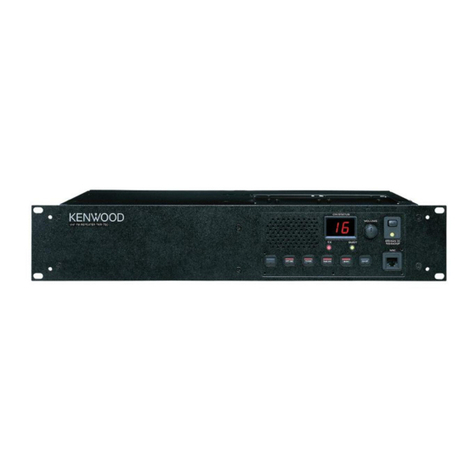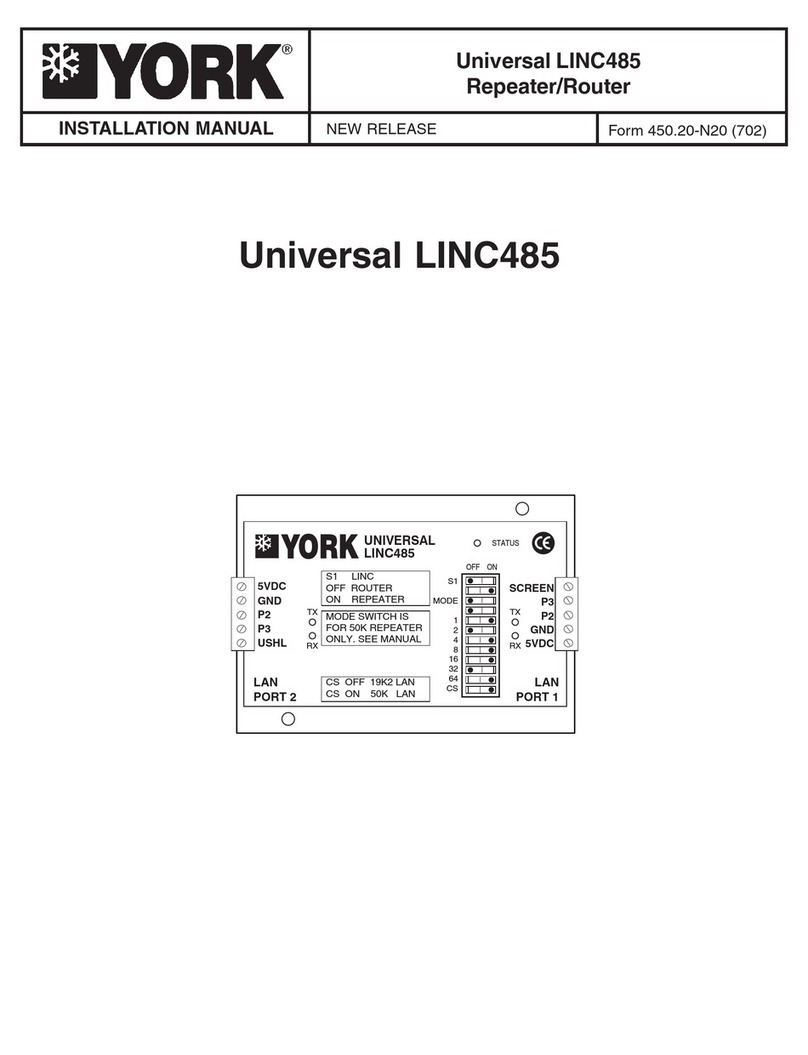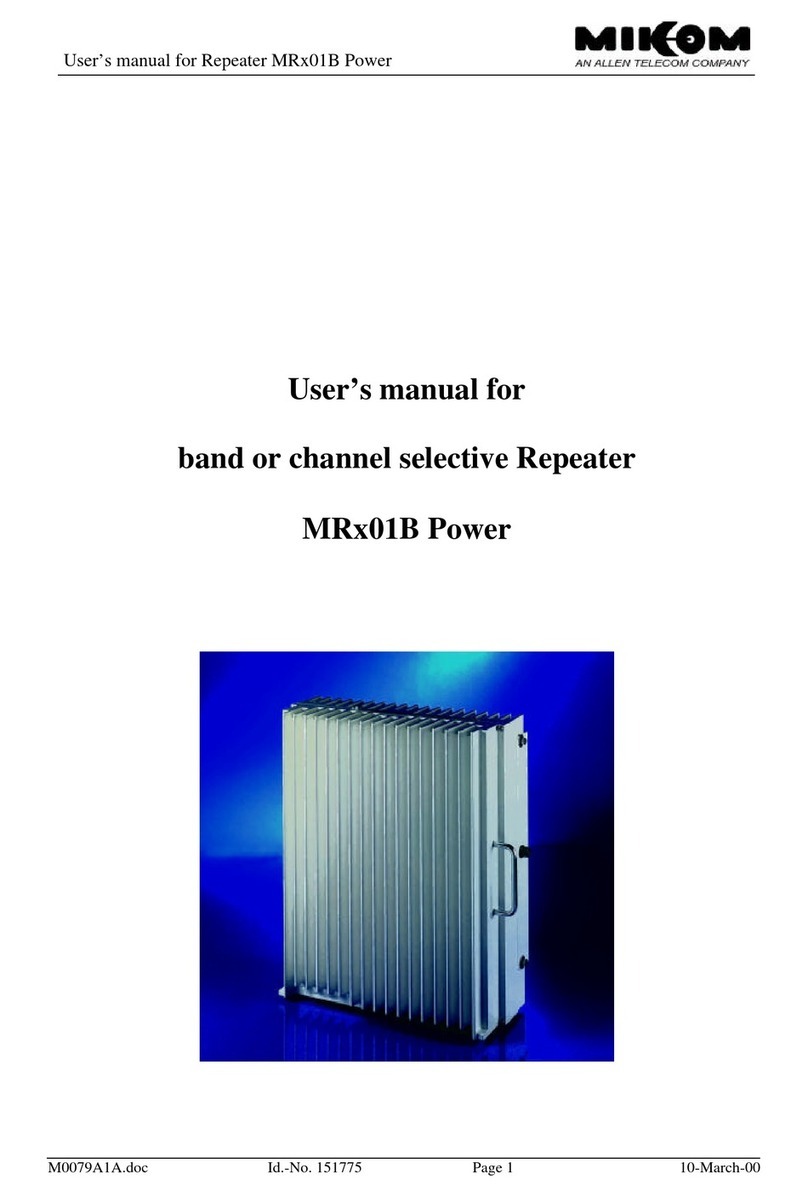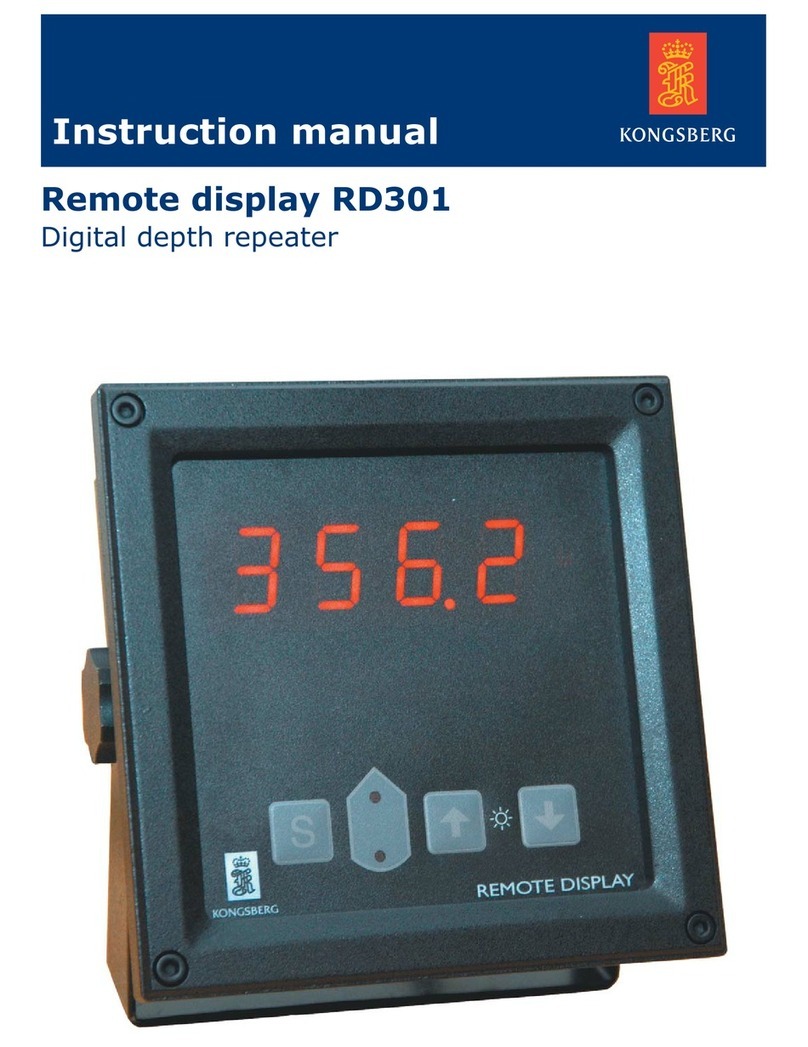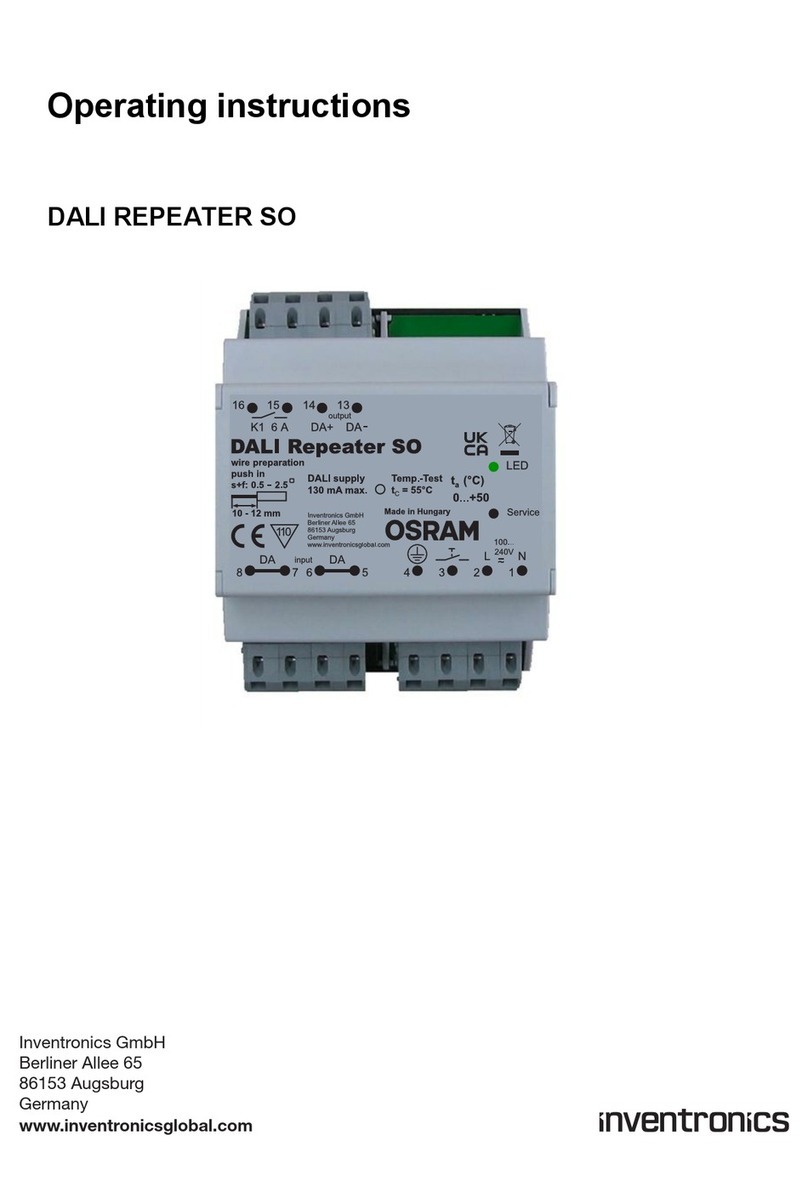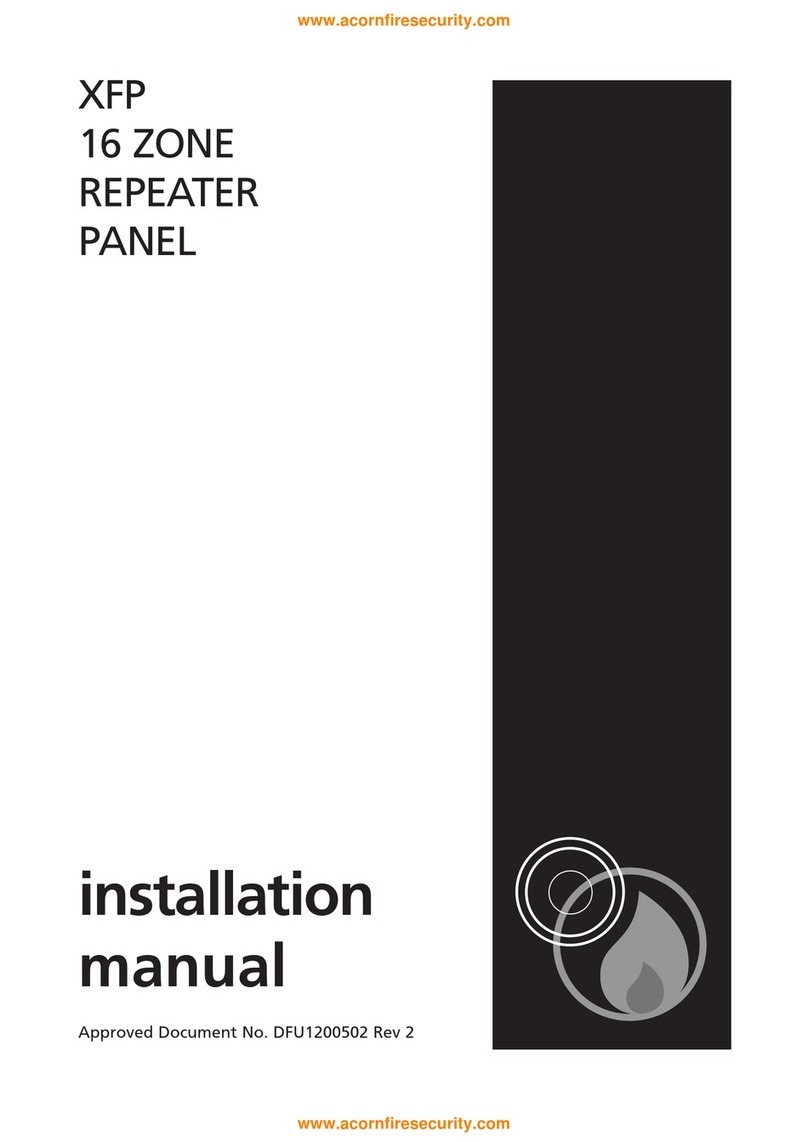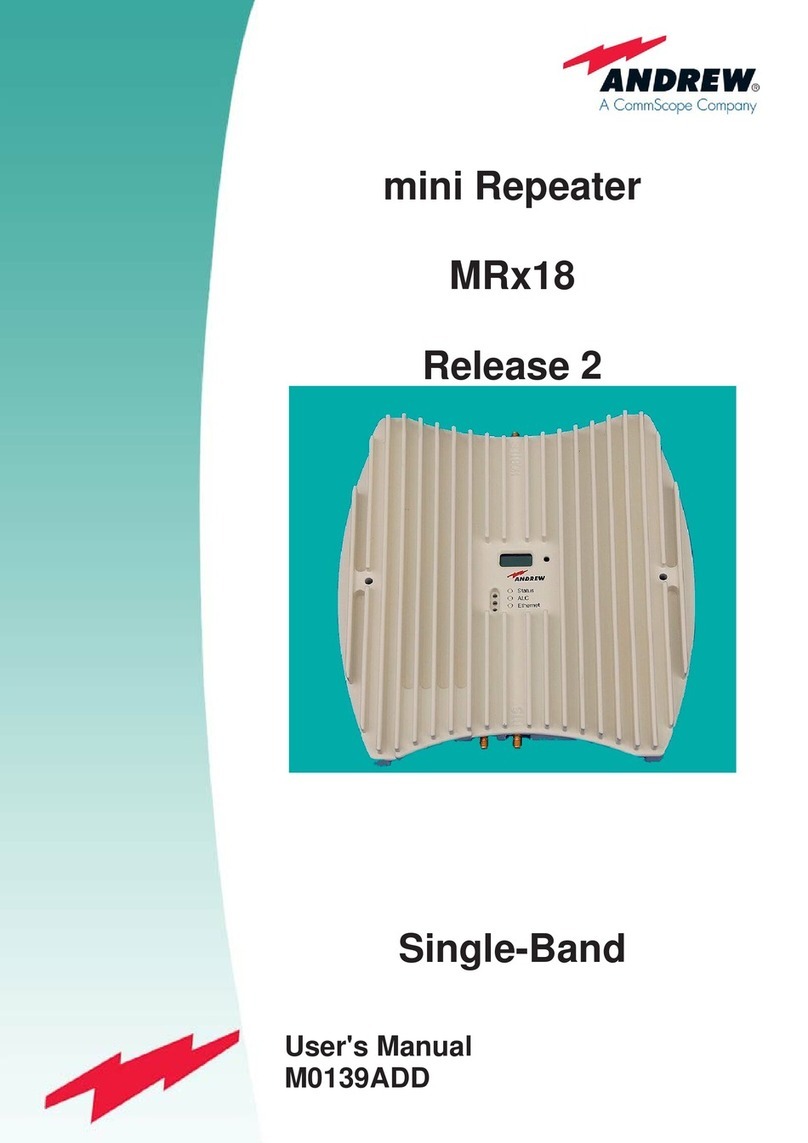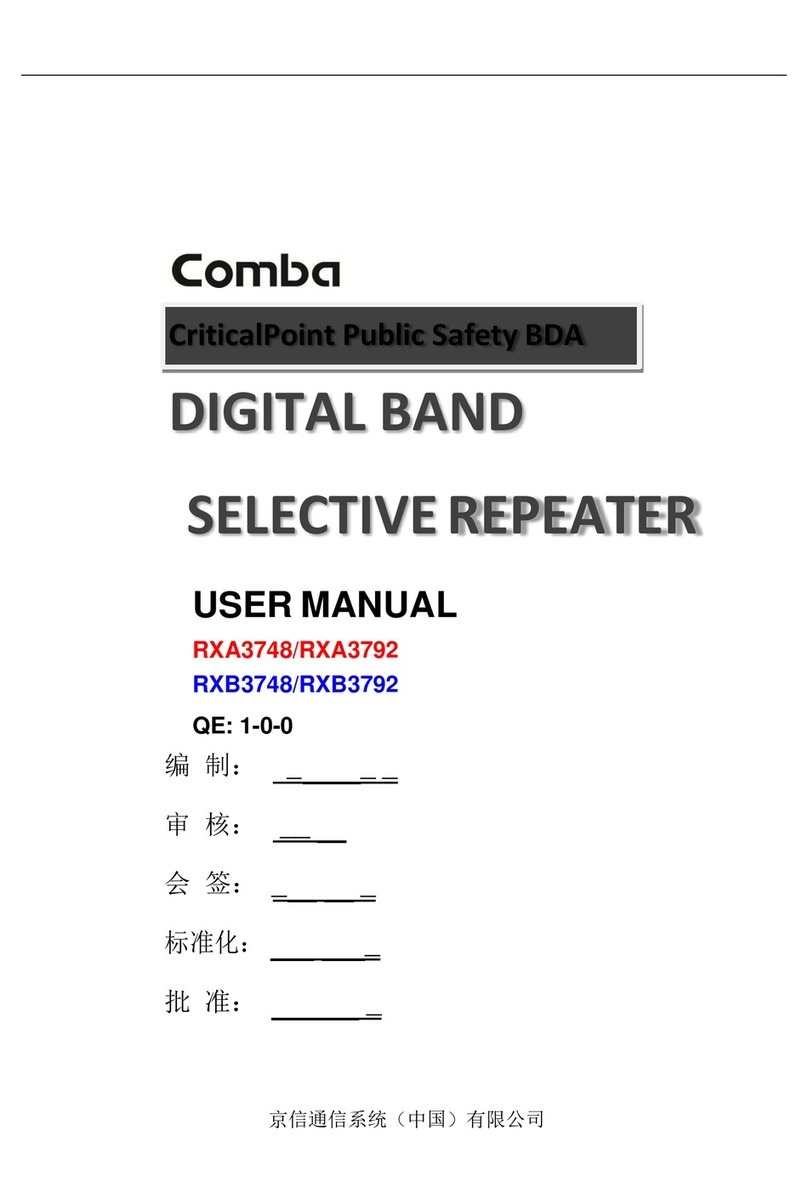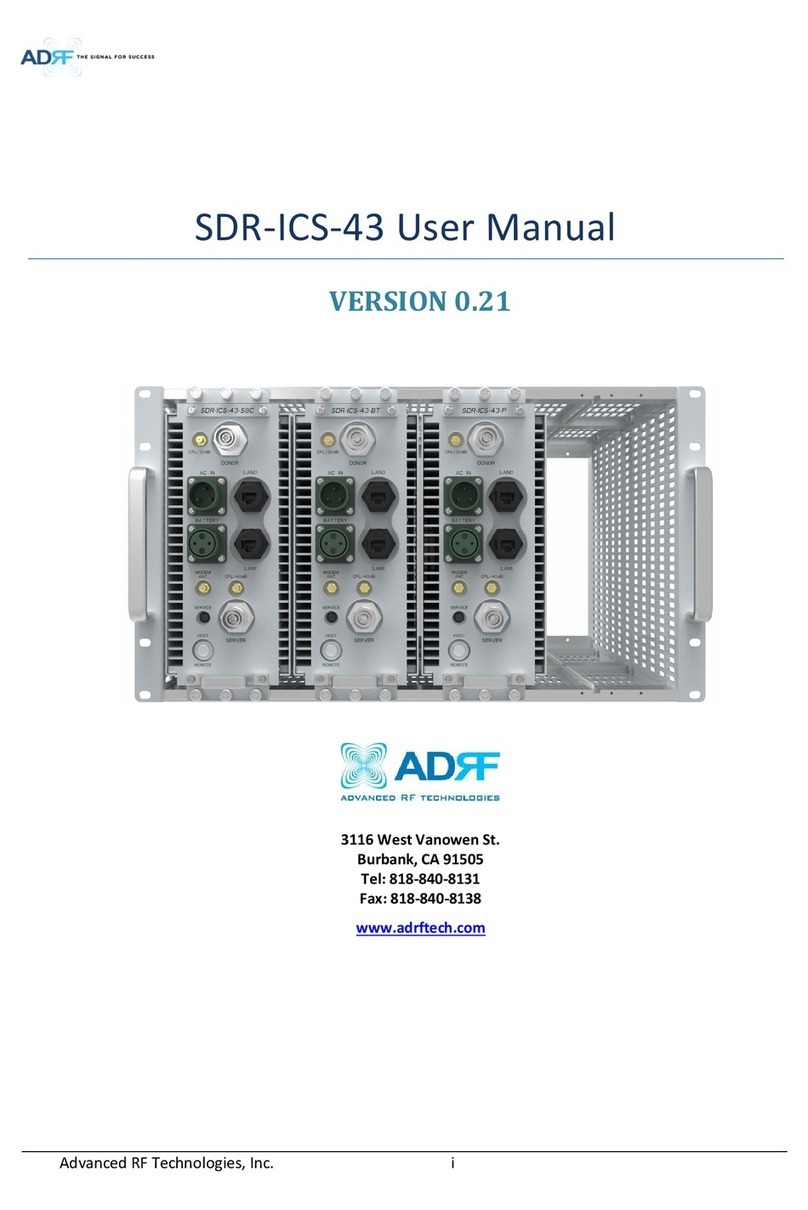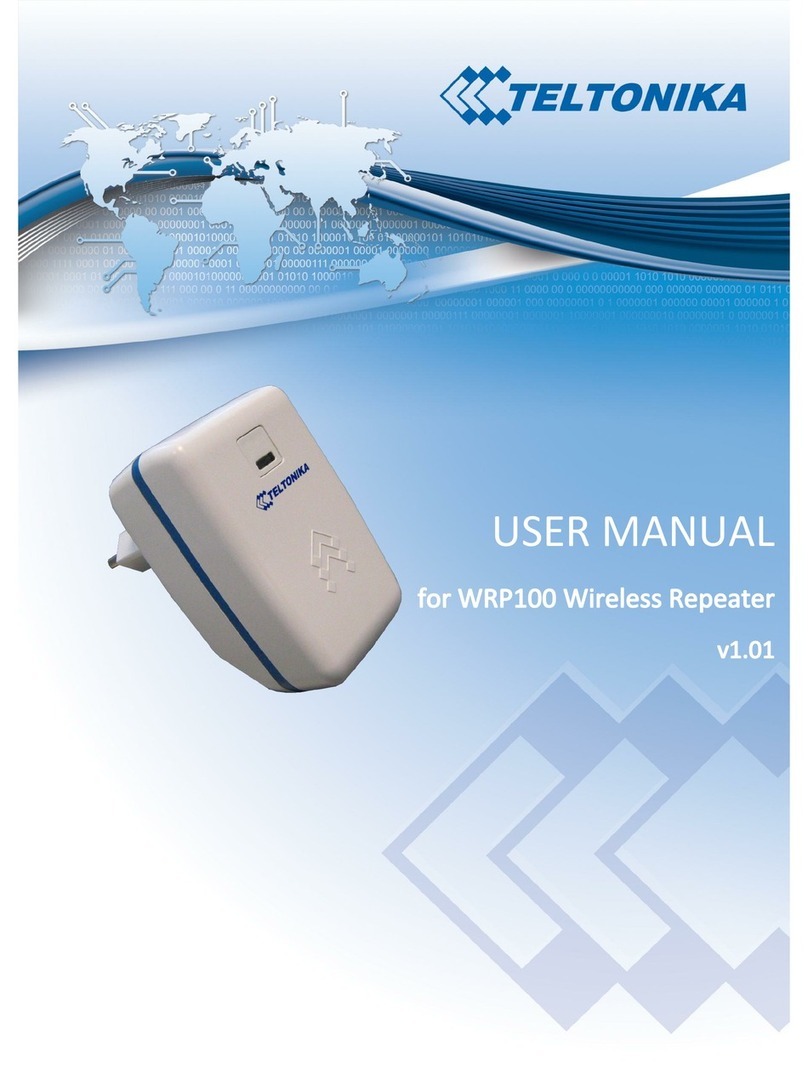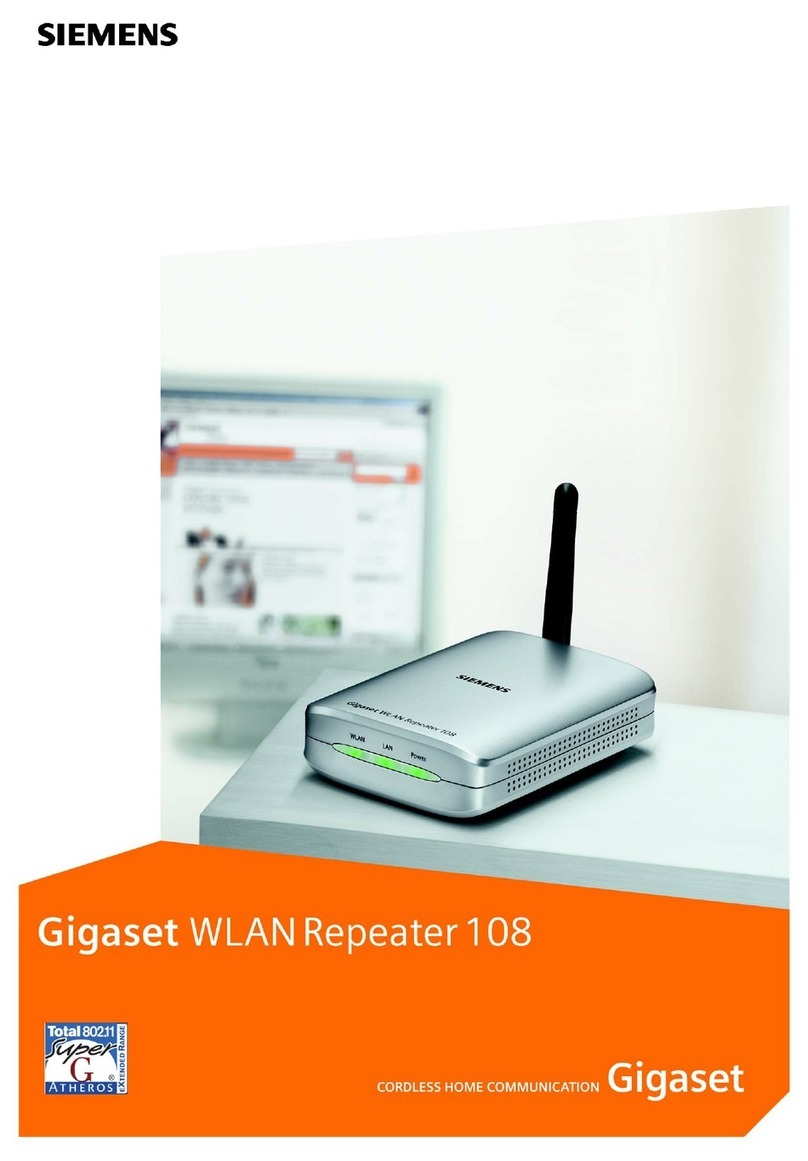ZB-2510 Series User Manual, Ver. 1.2 Page 3
1. Introduction
What are the benefits of using ZigBee?
ZigBee is a specification based on the IEEE 802.15.4 standard for
wireless personal area networks (W ANs). It is targeted at applications
that require secure networking as well as high flexibility for network
expansion anytime new nodes are to be added. It is also widely used in the
industrial control field, in hospitals, labs and in building automation. Three
topologies are defined in the IEEE 802.15.4 standard: Star, Cluster Tree
and Mesh.
ZB-2510 Series
The ZB-2510 series are two ZigBee-based repeater modules included
in the IC DAS product line. The main difference between T and
A-version is the transmission range. The ZB-2510-T supports an
extended transmission range of up to 100 meters, whereas the
ZB-2510- A can transmit to a maximum of 700 meters. Both modules are
able to operate in broadcast and user-defined route modes. When the
repeater is set to broadcast mode, the transmission route is constructed
by the ZigBee Host. The repeater will forward any data that it receives
using broadcast mode. The advantage of this mode is that the repeater
can be deployed in a “haphazard” manner without any concern about
positioning.
However, the main flaw of this mode is that if there are too many
ZigBee slaves sending connection request at same time, incorrect ZigBee
parent may response the ZigBee slave connection requests. It would be
causing a ZigBee network may not get the best signal strength topology. In
contrast, when the repeater is set to user-defined route mode, it can be
constructed as the best ZigBee network in signal strength. The benefit of
this mode is that the data transmission path can be defined by our-selves.
We can use this feature to avoid the signal transmitted in the
interference environment. However, if the main and redundant ZigBee
repeaters have failure, the ZigBee will be invalid.

